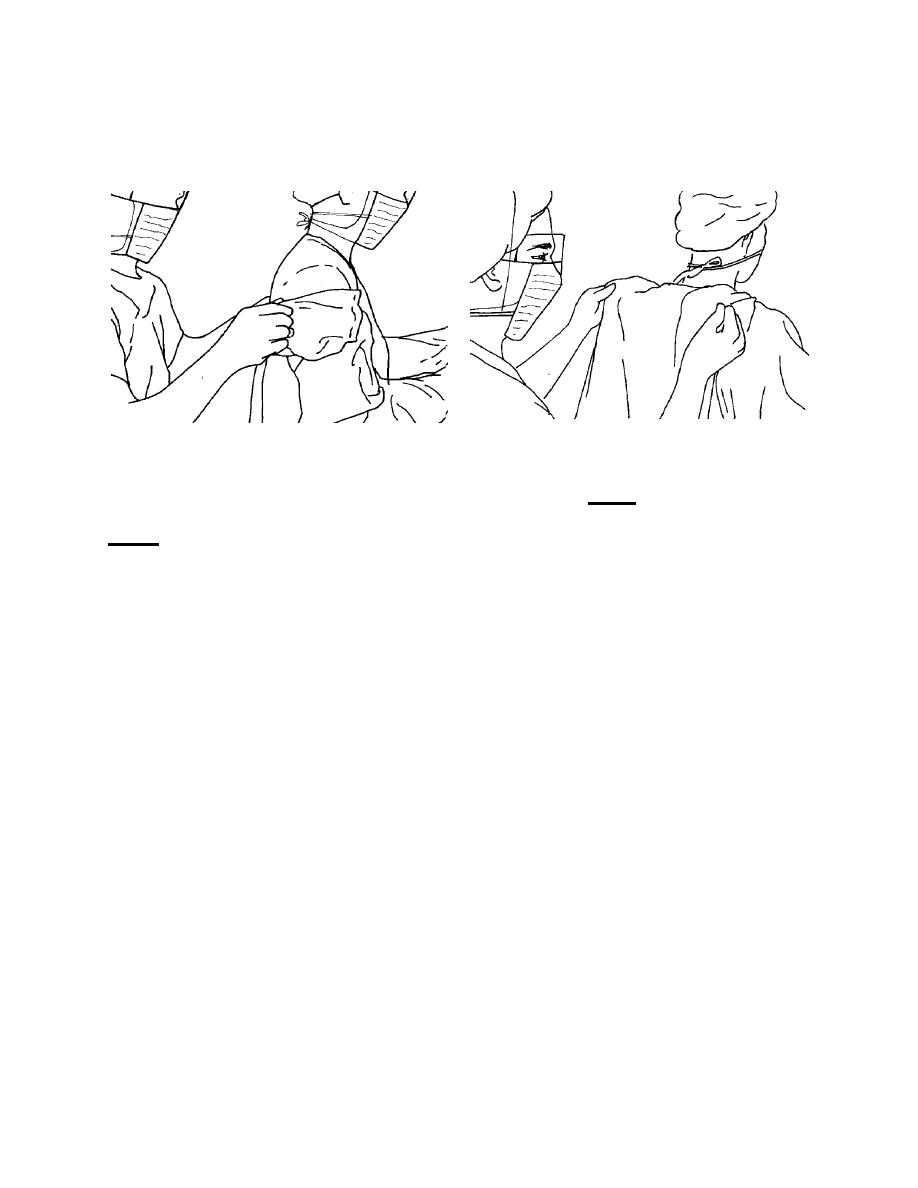
f. The circulator must continue to assist at this point. He positions the gown
over your shoulders (see Figure 1-19) by grasping the inside surface of the gown at the
shoulder seams.
Figure 1-19. 1 The circulator adjusts the gown over the scrub's shoulders.
2 The circulator adjusts the gown over the scrub's shoulders. Note that
the circulator's hands and arms are in contact with only the inside surface of the gown.
NOTE: For the reusable cloth gown (which is rarely used), use the procedures given in
steps a through f. The circulator then prepares to tie the gown. The neck and back
ties are tied in an up-and-down motion. He then ties the belt by grasping the gown at
the back as the scrub leans forward. The circulator leans down and grasps the distal
end of one belt tie; this enables the circulator to handle the belt without touching any
part of the gown that should remain sterile. The circulator then brings the belt tie to the
back of the gown. The scrub then swings toward the opposite side so that the circulator
can grasp the other belt in the same manner. The circulator will then tie the belt in an
up-and-down motion; this reduces the area of contamination on the gown. The
circulator will then tuck the ends of the belt inside the gown at the back. Then the
scrub; proceeds to the gloving procedure.
g. The circulator then prepares to secure the gown. The neck and back may
be secured with a Velcro tab or ties (see Figure 1-20). The circulator then ties the
gown at waist level at the back. This technique prevents the contaminated surfaces at
the back of the gown from coming into contact with the front of the gown.
MD0933
1-17



 Previous Page
Previous Page
